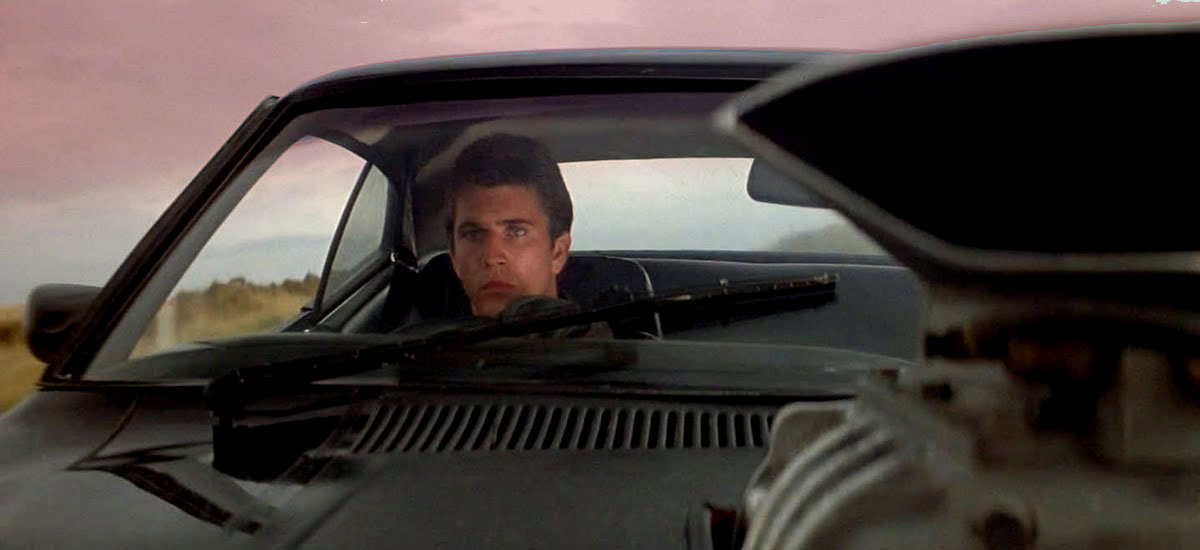It took me a lot of years to fully appreciate the movie Mad Max (1979). I saw that film many times on TV during the 1980s but if you would have asked me back then if I’d preferred Mad Max or its sequel The Road Warrior (1981) I would have gone with The Road Warrior every time.
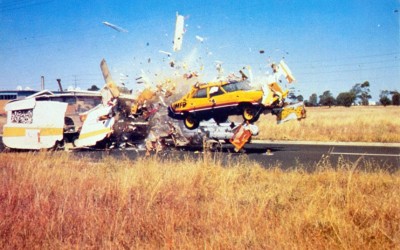 It wasn’t until Mad Max was finally released on DVD in its unedited and undubbed form that I began to see the strengths that movie had and slowly began to consider it the best Max movie of the bunch.
It wasn’t until Mad Max was finally released on DVD in its unedited and undubbed form that I began to see the strengths that movie had and slowly began to consider it the best Max movie of the bunch.
Since the fourth Max Max movie Mad Max: Fury Road is out May 15 I decided to watch the original Mad Max again. This time through I noticed something interesting that I hadn’t taken note of before. In Mad Max there’s a long stretch of film that has almost no dialog for more than 10 minutes. Which might not sound like much but in Mad Max which on its surface seems to be nothing more than a b-grade Western with cars instead of horses it’s something special.
In Mad Max, it’s the near-future and Max (Mel Gibson) is a police officer who gets on the bad side of a gang of bikers who murders his wife and child in retribution. Max, who goes “mad” as the Australians say “crazy” as Americans do, heads off on the hunt for the gang to kill each and every one of them.
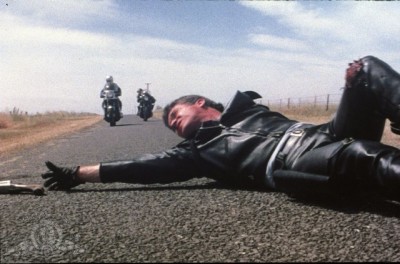
Which by all accounts is b-grade material that’s been used in loads of revenge movies/stories for years and years and years. But where Mad Max is different from what’s come before are those 10 minutes.
Over that stretch we see the bikers go about their activities bar hopping and stealing gas all the while being stalked by Max. Who eventually catches them on the open road and runs some of them down. The surviving bikers start looking for Max, ambush him and shoot him in the knee and run over his arm.
Here’s where the only bit of dialog in those 10 minutes comes in. There’s a total of nine words spoken between the two biker leaders as Max lays helpless on the road:
Toecutter: “Quit toying, Bubba.”
Bubba: “Easy, I know what I’m doing.”
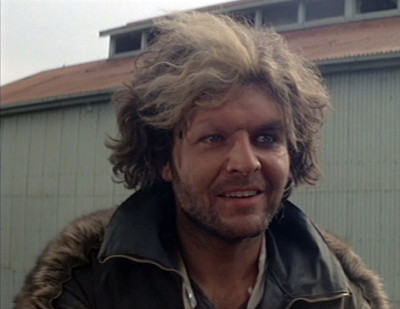
And that’s it. Max gets the upperhand, kills Bubba and in a spectacular real-life stunt chases the Toecutter with his car mere inches from the back wheel of the bike as the two scream down the road. Eventually the Toecutter crashes and is killed by a semi.
Then Max goes off to find the last member of the gang Johnny the Boy in a final scene that’s back to dialog.
But those 10 minutes are something to behold. It seems today that every movie, be it action or otherwise, is chock full of dialog. And it’s easy to see why. It’s simpler for a character to tell the audience what’s going on (“We need to go over there!”) rather than showing them doing it. And with movies that have a lot of story this is an easy way to save time.
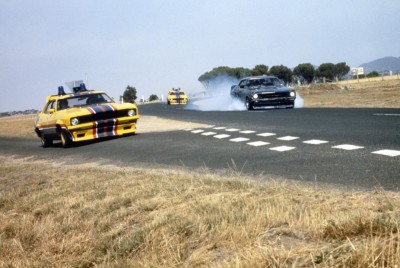
Where this technique goes askew is with modern action movies that are so complex the characters need to literally tell the audience what’s going on to keep them from becoming confused as to what’s happening on-screen. Things are exploding and there’s heroes fighting here and villains fighting there. And if someone’s not telling the audience what’s occurring it all becomes a mess and the viewers can become lost.
When I wanted to become a comic book artist I once read an article that recommended watching movies with the sound off. It said that if you can understand what’s going on with without dialog then the writer/director’s done their job well.
Which is what I thought about the last time I watched Mad Max. This whole 10 minute chunk of the movie plays out perfectly well with perfect visual clarity. There’s not a question as to what’s going on or why Max is going after these guys on screen. I was never confused as to what was going on and any extraneous dialog would have added nothing to the scene.
